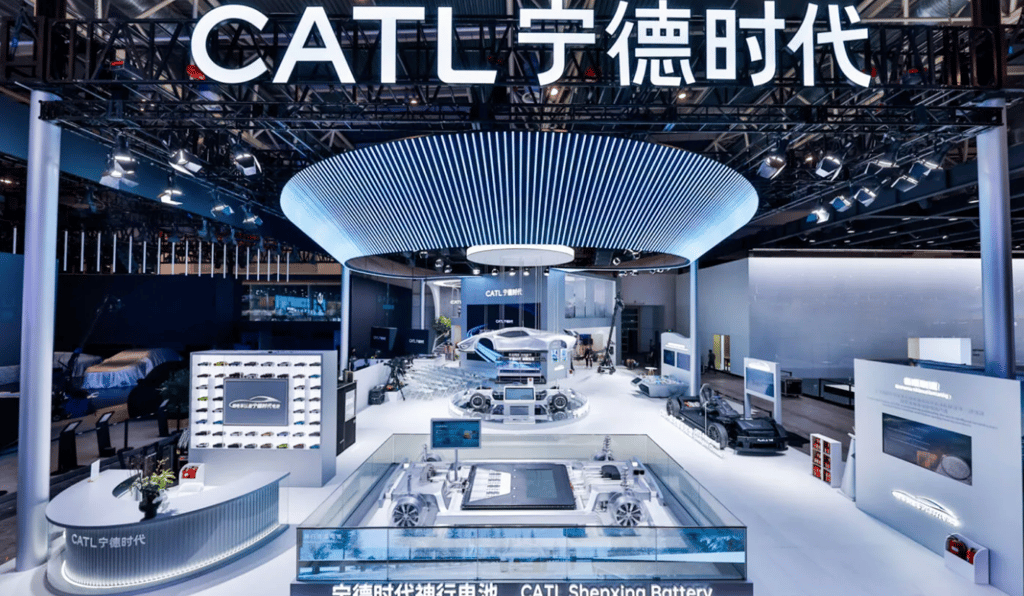CATL’s Sodium-Ion Breakthrough: Is Japan Ready to Challenge China’s Battery Supremacy?
5/10/20254 min read


CATL’s Sodium-Ion Breakthrough: Is Japan Ready to Challenge China’s Battery Supremacy?
In the high-stakes race for battery dominance, a new player is charging onto the scene. China’s Contemporary Amperex Technology Co. Limited (CATL), the world’s largest electric vehicle (EV) battery manufacturer, has unveiled its second-generation sodium-ion battery, promising ultra-fast charging and game-changing potential. With a five-minute charge delivering over 520 kilometers of range, this innovation could redefine electric mobility. But as Japan ramps up its battery tech efforts, is it finally poised to catch up to China’s lead? Buckle up—this is more than just a battery; it’s a glimpse into a greener, electrified future.
The Sodium-Ion Revolution
CATL’s latest announcement at the 2025 Shanghai Auto Show sent shockwaves through the EV industry. The second-generation sodium-ion battery, branded Naxtra, achieves an energy density of 175 Wh/kg—on par with many lithium iron phosphate (LFP) batteries—and supports a blistering 5C charging rate. In practical terms, this means an EV can gain 310 miles of range in just five minutes when paired with megawatt-level chargers. Even more impressive, the battery maintains 93% capacity at -30°C and can discharge normally at -40°C, addressing one of the biggest pain points for EVs: cold-weather performance.
Unlike lithium-ion batteries, which rely on scarce and costly materials like lithium and cobalt, sodium-ion batteries use abundant sodium, slashing production costs and reducing supply chain risks. CATL’s Naxtra also boasts a lifecycle of 10,000 charges—equivalent to 27 years of daily charging—and exceptional safety, with tests showing no thermal runaway even when drilled or cut in half. This makes it a compelling alternative for EVs, heavy-duty trucks, and even energy storage systems.
CATL isn’t stopping there. The company also launched the second-generation Shenxing LFP battery, which offers an 800-kilometer range and a 12C charging rate, adding 2.5 kilometers of range per second. Additionally, the Freevoy dual-power battery combines sodium-ion and lithium-ion chemistries for hybrid vehicles, delivering over 400 kilometers of electric range. These innovations solidify CATL’s position as a titan in the battery world, with over 18.32 million vehicles across 66 countries powered by its tech.
Japan’s Bid to Catch Up
While CATL dominates, Japan—a historic leader in battery tech—is fighting to reclaim its edge. Companies like Panasonic, Toyota, and Nissan have been overshadowed by China’s aggressive investments and subsidies, which propelled CATL and BYD to global leadership. In 2023, CATL alone held a 37% share of the EV battery market, while Japan’s players lagged behind.
But Japan is striking back. Toyota is developing solid-state batteries, promising higher energy densities and faster charging than lithium-ion. Panasonic is scaling up its 4680 cylindrical cells for Tesla, and Nissan is investing in next-gen chemistries. Government initiatives, like Japan’s $2.4 billion subsidy for battery R&D, aim to boost domestic production and reduce reliance on Chinese supply chains.
Despite these efforts, Japan faces hurdles. China’s control over raw materials and its mature battery ecosystem give CATL a cost advantage. For instance, sodium-ion batteries leverage aluminum instead of copper for anodes, further lowering costs—a strategy CATL has mastered. Japan’s slower adoption of EVs domestically also limits its testing ground compared to China’s booming market.
Why This Matters
The implications of CATL’s sodium-ion breakthrough extend far beyond EVs. Imagine smartphones that last days on a single charge, laptops that rarely need a plug, or electric planes powered by lightweight, high-density batteries. Sodium-ion’s safety and cost advantages could also revolutionize grid storage, enabling solar and wind energy to dominate the power mix.
For consumers, ultra-fast charging eliminates range anxiety, making EVs as convenient as gas-powered cars. A five-minute pit stop at a charger could become the norm, transforming road trips and urban commuting. Plus, sodium-ion’s environmental edge—relying on abundant materials—aligns with global sustainability goals, reducing the ecological toll of mining lithium and cobalt.
Japan’s push to catch up could spark a healthy rivalry, driving innovation and lowering prices. However, CATL’s head start and China’s supply chain dominance mean Japan must move fast to avoid being left in the dust.
The Road Ahead
CATL plans to begin mass production of Naxtra in December 2025, with full-scale output by 2027. This timeline gives Japan a narrow window to accelerate its R&D and scale production. Collaborations with global automakers like BMW, Tesla, and Toyota could help Japanese firms bridge the gap, but they’ll need to match CATL’s pace of innovation.
The battery race is also geopolitical. China’s grip on battery tech strengthens its influence over the global EV market, while Japan’s efforts align with Western goals to diversify supply chains. The outcome will shape not just transportation but the broader energy transition.
What’s Next for You?
CATL’s sodium-ion battery is a wake-up call—a reminder that the future of energy is being written now. Whether you’re an EV enthusiast, a tech geek, or just curious about a greener world, this is a story worth following. Japan’s comeback attempt adds intrigue: can the underdog challenge the giant?
So, what do you think?
Will sodium-ion batteries make EVs unstoppable, or are there still hurdles to overcome?
Can Japan close the gap with China, or is CATL too far ahead?
How could ultra-fast charging change your daily life—less time plugged in, more time on the go?
Drop your thoughts in the comments and join the conversation at Boncopia.com. The battery revolution is here—are you ready to plug in?
Word count: 912
hello@boncopia.com
+13286036419
© 2025. All rights reserved.